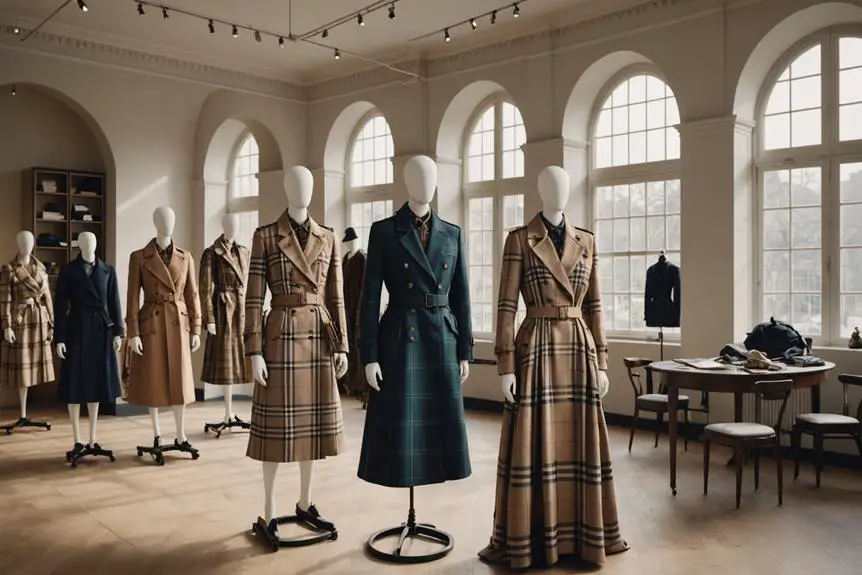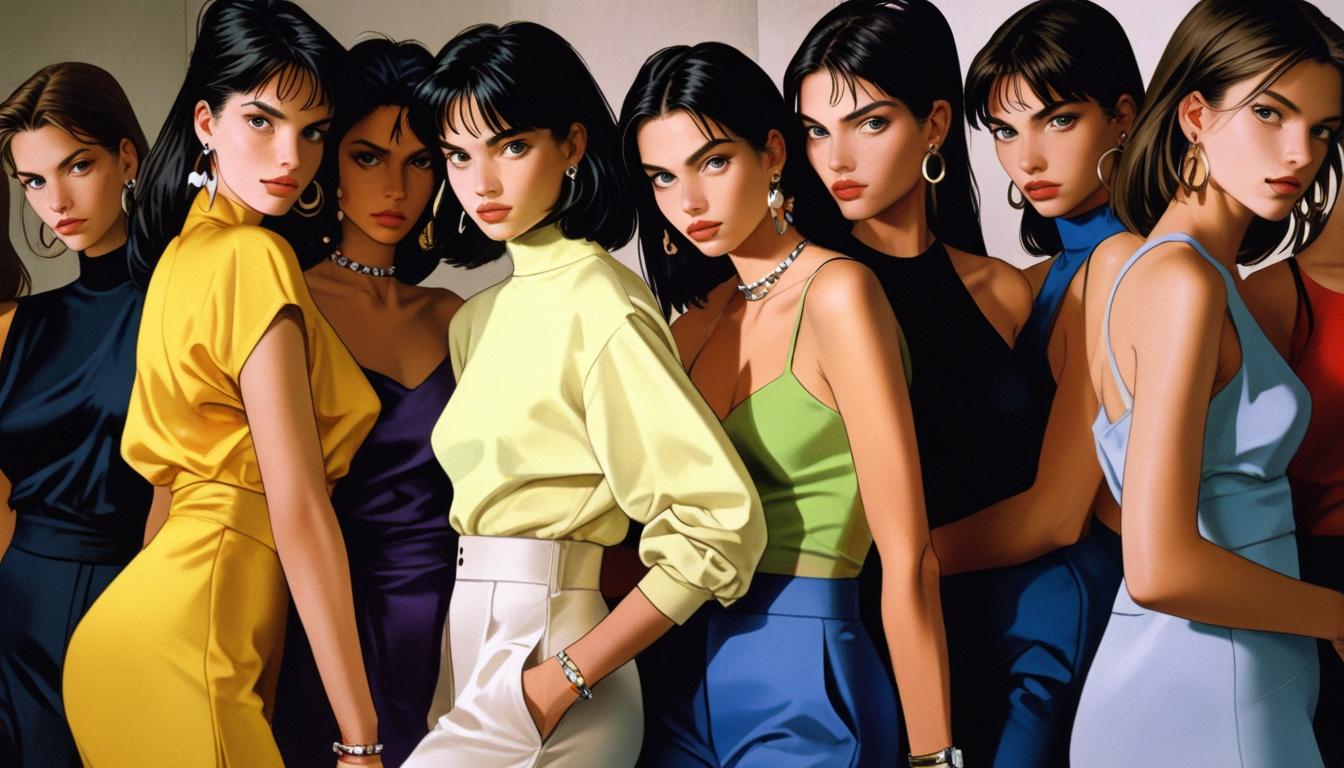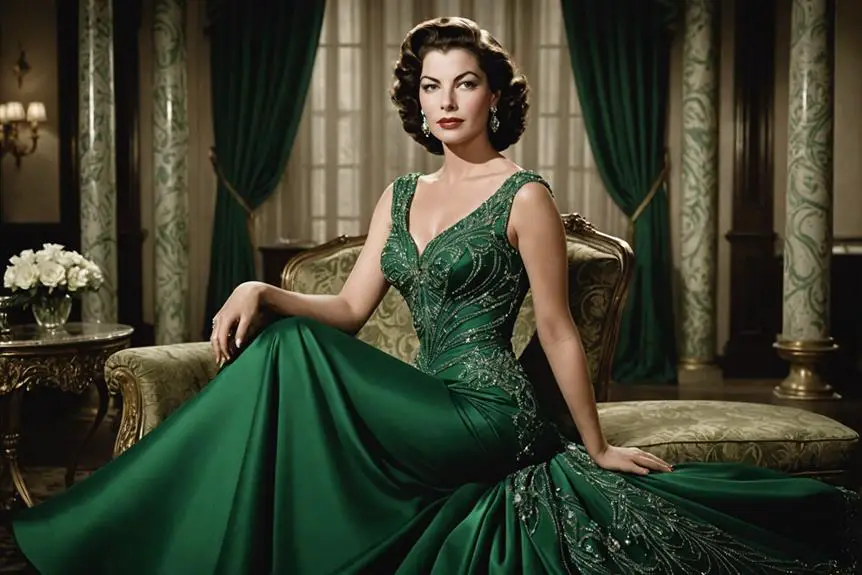It's interesting how you stumbled upon a conversation about Burberry just as you were considering the impact of its designers. Each creative director, from Christopher Bailey's modern touches to Riccardo Tisci's gothic flair, has contributed to a narrative that intertwines heritage with contemporary style. Now, with Daniel Lee at the helm, the brand is exploring British identity in new ways. What does this evolution mean for the future of Burberry, especially in a rapidly changing fashion landscape?
Historical Overview of Burberry Designers
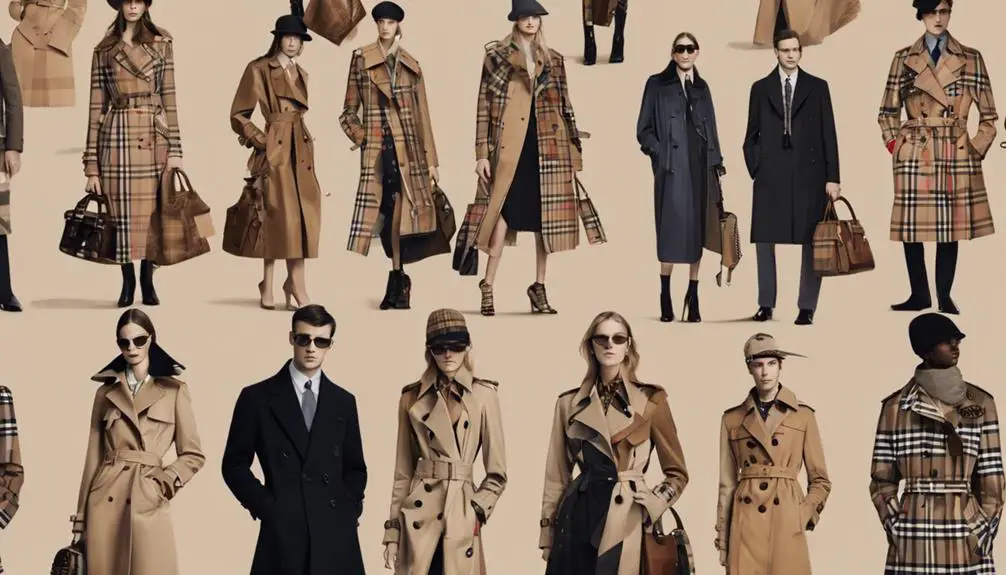
Burberry's design evolution reflects its rich history and the influence of various creative leaders. You can see how this iconic luxury brand has transformed over the years, shaped by the unique visions of its creative directors. Christopher Bailey joined Burberry in 2001, revitalizing the brand's image and aligning it with contemporary fashion trends until 2018. His tenure emphasized modernity while preserving the classic trench coat, a staple of British identity. Bailey's leadership helped Burberry recover from a challenging period, ensuring its status as a luxury brand.
In 2018, Riccardo Tisci took the reins as chief creative officer, infusing the brand with a gothic aesthetic and a focus on streetwear. This marked a significant shift, as Tisci sought to attract a younger audience while still honoring Burberry's heritage. His bold designs challenged traditional norms and introduced a fresh, edgy vibe that resonated in the fashion world.
Most recently, in October 2022, Daniel Lee stepped in as chief creative officer with a mission to re-establish Burberry's British identity. Lee's approach combines heritage with modern design elements, aiming to create a dialogue between Burberry's storied past and its future. His fresh visual campaigns are anticipated to further elevate the brand's luxurious essence while enchanting new generations of fashion enthusiasts.
Through these creative leaders, Burberry's historical overview showcases a dynamic interplay of tradition and innovation, affirming its place at the forefront of the fashion industry.
Daniel Lee's Creative Direction
Stepping into the role of chief creative officer in October 2022, Daniel Lee set out to redefine Burberry's identity by reconnecting it with its rich British heritage. With a fresh vision that marks a new chapter for the brand, Lee's approach emphasizes a "wipe-the-slate-clean" philosophy, allowing him to explore innovative designs while honoring the essence of Burberry.
His first collection debuted on February 20, 2023, during London Fashion Week, instantly capturing attention with oversized designs that blended modernity with tradition. Lee's modern interpretation of Burberry's iconic check pattern showcased not only his creative talent but also his ability to resonate with a diverse audience. The introduction of Knight blue as a signature color reflects his focus on contemporary aesthetics while paying homage to the brand's storied legacy.
Incorporating familiar British motifs, Lee's creative direction celebrates the cultural connections inherent in Burberry's identity. His designs invite you to experience a fresh perspective on British heritage, marrying the classic with the contemporary. The oversized silhouettes and striking color palette create a sense of excitement and innovation, drawing you into a world where tradition meets modern fashion.
Impact of Past Designers
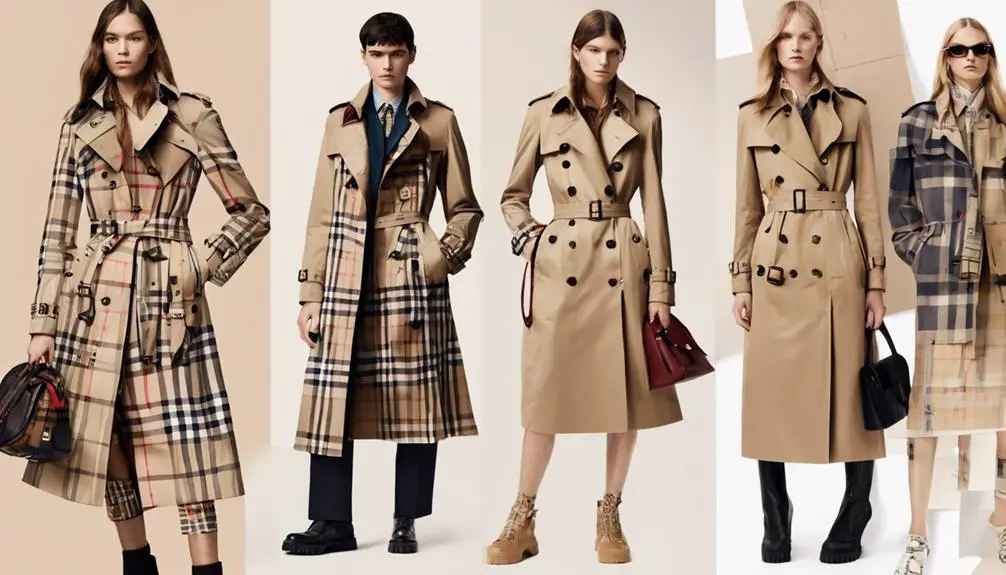
The impact of past designers on Burberry is profound, shaping the brand's trajectory and identity over the years. Take, for instance, Christopher Bailey, who served as creative director from 2001 to 2018. His innovative approach rejuvenated Burberry, introducing modern silhouettes and pioneering digital innovations, like the first luxury fashion show livestream in 2010. Under Angela Ahrendts, the CEO from 2006 to 2014, Burberry saw a significant brand revitalization, expanding its global presence through direct-to-consumer retail strategies.
Then came Riccardo Tisci in 2018, who brought a gothic aesthetic and a revamped visual identity. While his bold changes stirred some controversy for straying from Burberry's classic heritage, they undeniably pushed the brand into new territories. Following him, Daniel Lee took the helm in 2022, aiming to reconnect Burberry with its roots, focusing on British identity and cultural significance. His vision emphasizes modern interpretations of traditional designs, ensuring the brand remains relevant in today's luxury fashion landscape.
Each of these designers has left an indelible mark on Burberry, influencing its market position and aesthetic focus. They've responded to evolving consumer preferences, demonstrating how a brand can honor its heritage while embracing innovation. The journey of Burberry, shaped by these creative leaders, showcases a continuous evolution that respects tradition while looking boldly toward the future.
Burberry's Cultural Influence
At the heart of Burberry's cultural influence lies a deep celebration of British identity, woven into its designs through iconic motifs like foxes, corgis, and rain. This rich tapestry of British cultural elements resonates with diverse representations of what it means to be British. Under the creative direction of Daniel Lee, Burberry aims to reconnect with its British heritage, adopting a revitalizing "wipe-the-slate-clean" approach. This reimagining is evident in the reintroduction of the Equestrian Knight logo in 2023, which symbolizes not just history but also a commitment to engaging contemporary audiences.
Burberry's connection to British subcultures, particularly the mods and punks, is fundamental to its cultural narrative within the fashion industry. These influences reflect a deep understanding of the diverse facets of British culture, making the brand a significant player in shaping trends that resonate with various subcultures. Collaborations with British artists like choreographer Wayne McGregor and photographer Tyrone Lebon further illustrate Burberry's dedication to supporting and celebrating contemporary British culture.
These partnerships not only enhance the brand's visibility but also create a dialogue between fashion and the arts, enriching the cultural landscape. As Burberry continues to evolve, its commitment to honoring British heritage while embracing modern influences guarantees its place as a crucial force in the fashion industry, inspiring future generations to appreciate the beauty of British identity.
Future Trends in Design
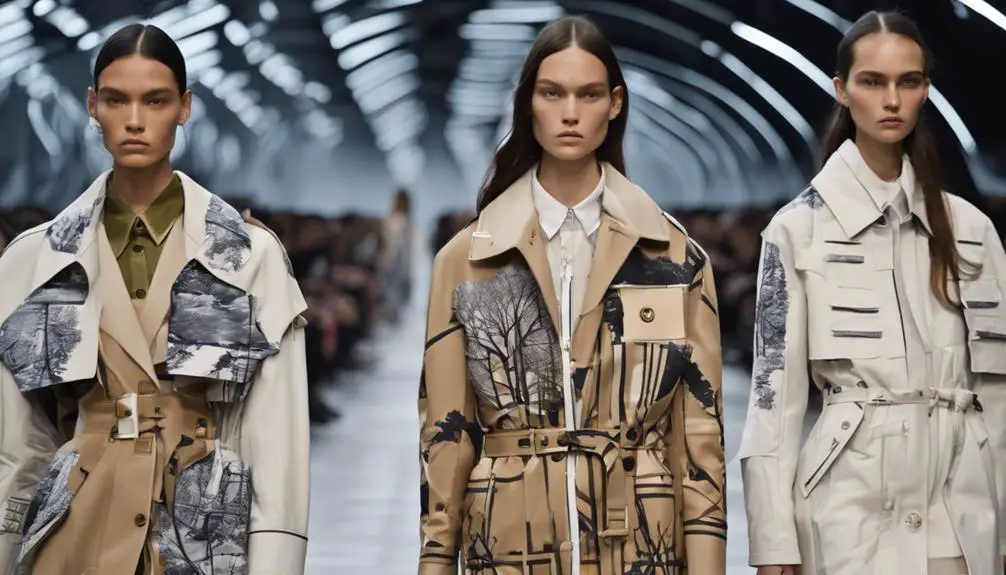
Burberry's future design trends promise an exhilarating blend of heritage and modernity that speaks directly to today's consumers. Under the visionary leadership of Daniel Lee, who became chief creative officer in October 2022, Burberry is set to redefine its British identity while emphasizing cultural significance through innovative design. Lee's first collection, revealed at London Fashion Week on February 20, 2023, masterfully balanced classic elements with modern interpretations, appealing to both loyal fans and new shoppers.
As you look ahead, expect to see oversized silhouettes and outdoor wear becoming staples in Burberry's collections. These designs reflect Lee's deep appreciation for British outdoor heritage and craftsmanship, making them not only stylish but also practical for contemporary lifestyles. This focus on functionality resonates with today's consumers, who seek versatile clothing that merges comfort with chic aesthetics.
Moreover, Burberry's marketing strategies are likely to spotlight collaborations with British artists and influencers, reinforcing the brand's cultural ties while enchanting younger audiences. The reintroduction of the Equestrian Knight logo, coupled with a refreshed visual campaign, suggests a commitment to heritage that also embraces modernity. This harmonious blend aims to bridge the gap between past and future, ensuring that Burberry remains relevant in an ever-evolving fashion landscape.
In this thrilling era, Burberry is primed to enthrall consumers, melding innovative design with its rich legacy, creating a brand that feels both timeless and fresh.
